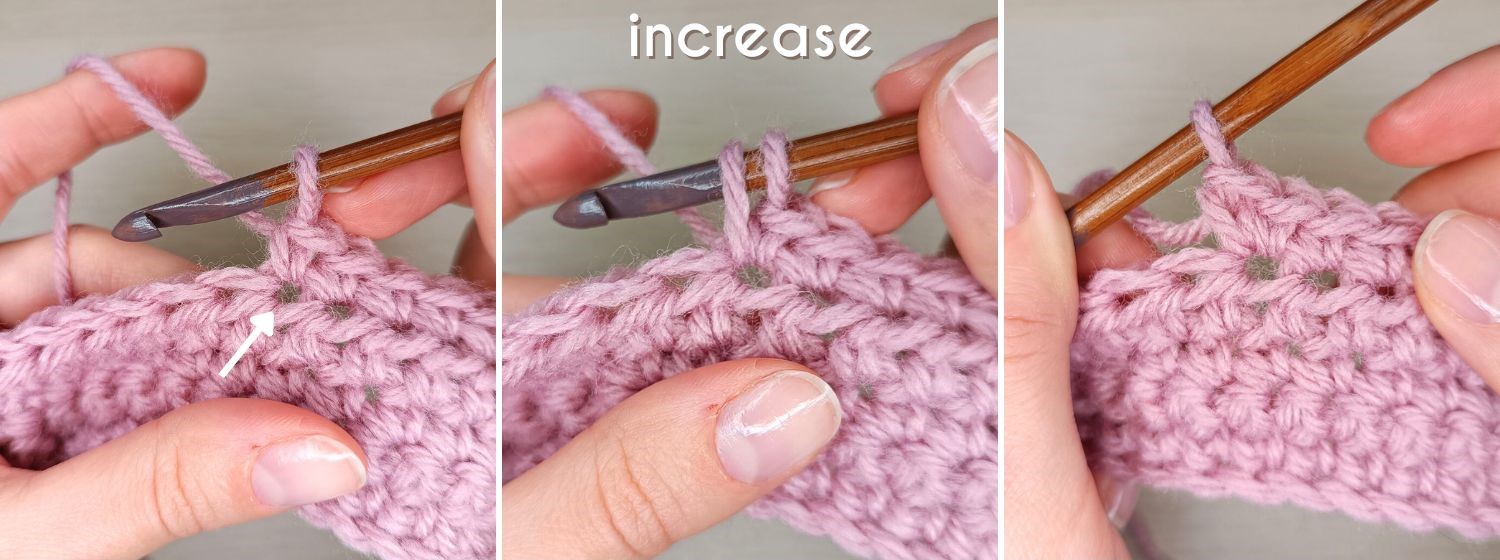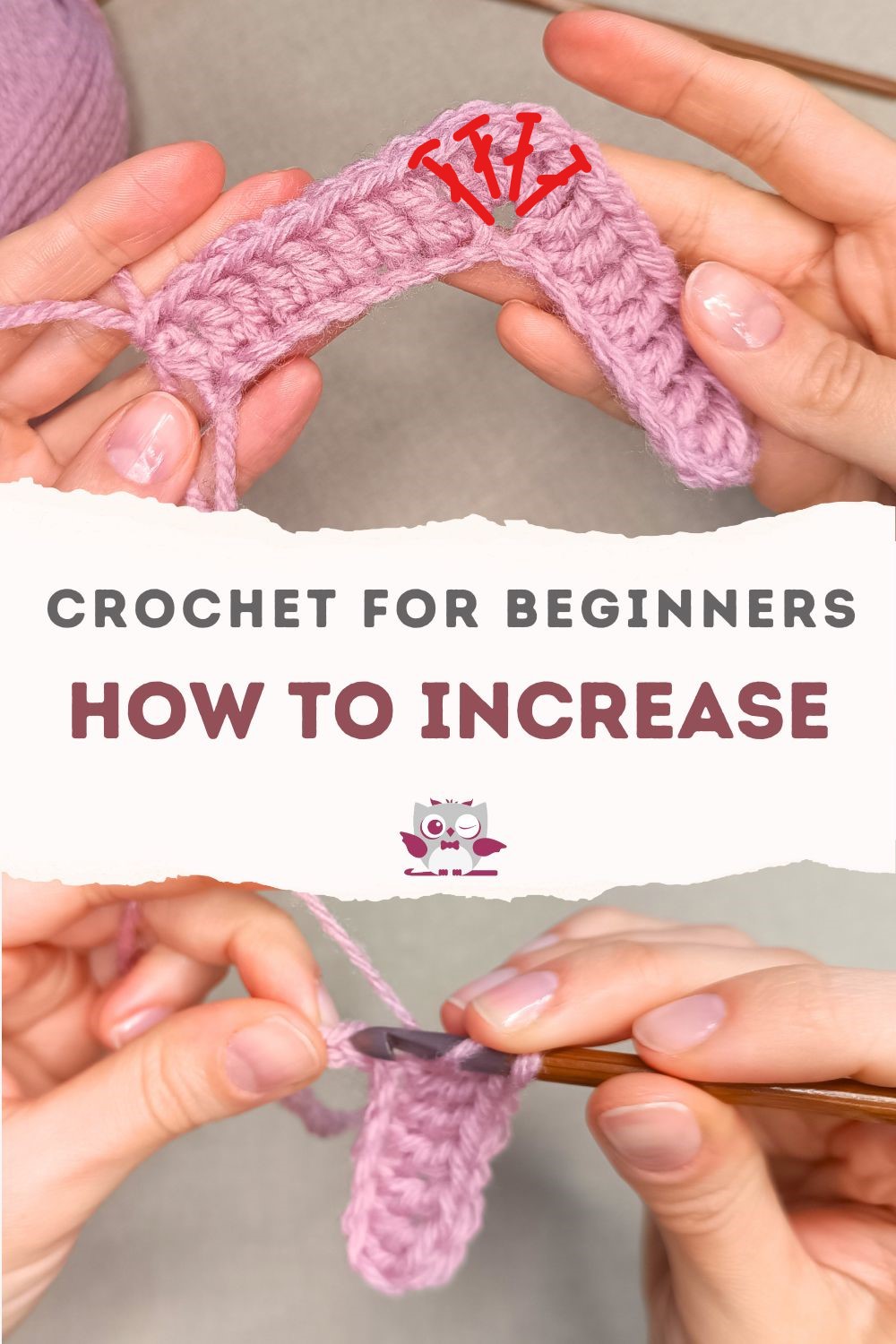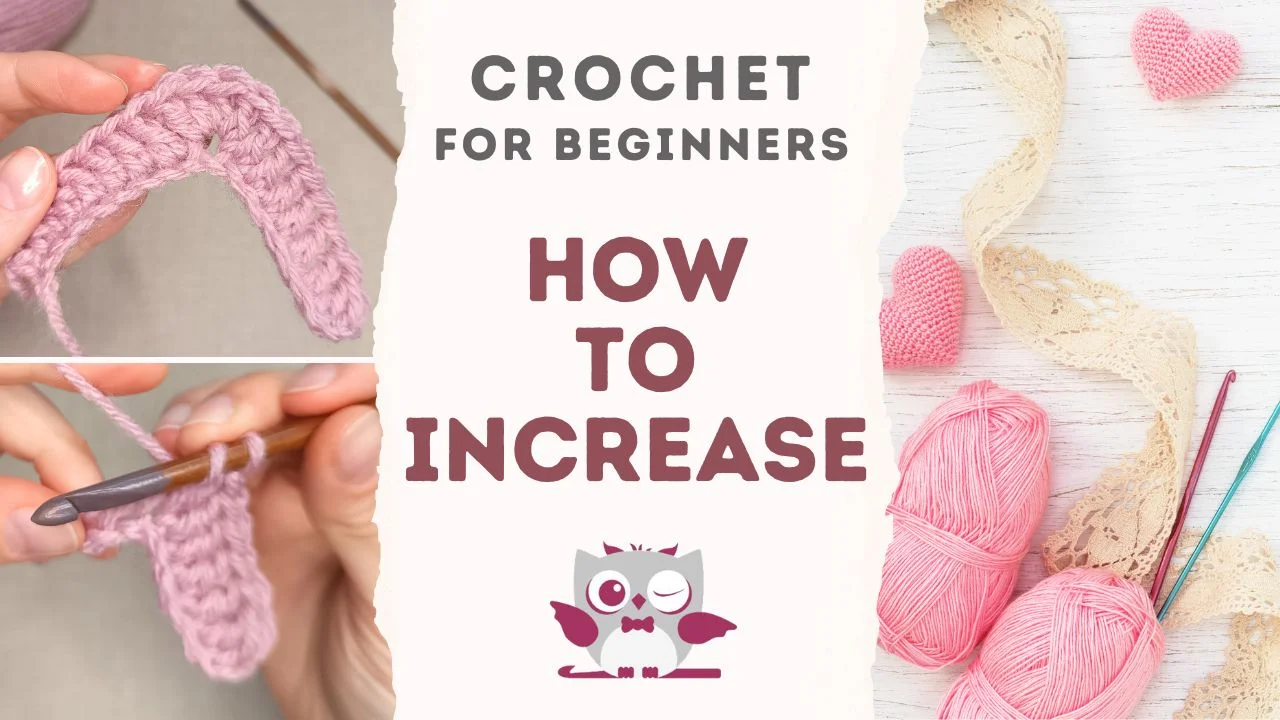In this article:
If there’s one thing every crocheter must learn, it’s how to increase and decrease stitches. Knowing how to add stitches is crucial for crafting amigurumi creatures, elegant shawls, or cozy home accessories. Let’s explore the ins and outs of increasing in crochet. In this article, you will discover both basic techniques and advanced tips.
What increasing in crochet means
To increase in crochet means to add stitches in a row or a round. You can do it gradually, to shape the fabric in a regular manner, or distort it unevenly. This process results in curves, widened projects, or creating geometric shapes.
Importance of knowing how to increase in crochet
Understanding how increasing works should be high on the list of priorities of any aspiring crocheter. Properly placed increases ensure your work’s shape and size, therefore allowing you to enjoy a great fit. Crochet clothing, accessories, amigurumi toys, or home decor – all require adding stitches.
Learn how to increase in crochet
Follow the video tutorial to learn how to increase with basic stitches. Kate covers increasing with single crochet, half double crochet, double crochet, and treble crochet stitches.
Video tutorial
Video by Crochetpedia for YourCrochet.
Basic Techniques
Master these basic increases to gain confidence in more advanced projects.
Single crochet increase
This short guide below shows how to make two single crochet stitches in one stitch. We increase the overall stitch count (+1) by making two stitches instead of one.

Half double crochet increase
If your crochet pattern requires making two half double crochet stitches in one, it means an increase. We use the “2 hdc in one st” crochet abbreviation to indicate it in written patterns.
Double crochet increase
Encountering the instruction “2 dc in one st” should result in making two double crochet stitches in one. This way the overall stitch count will be greater by one.
Treble crochet increase
As with other stitches, treble crochet increase is most often abbreviated as “2 tr in one st”. Although it is the most common type of increase, you can find “3 tr in one st” or “4 tr in one st” as well.
Increasing in different stitch patterns
While increasing by one is the most common, there are patterns in which we need more than one additional stitch. For example, patterns such as shells, clusters, or fans, involve multiple increases. These increases create decorative elements on the surface but you have to control the overall stitch count.
Increasing in the Round
The right use of increases allows us to crochet three-dimensional crochet pieces. Whether you are going for a flat circle, a basket shape, or a ball – the placement of increases will make or break the project.
Sometimes we have to start increasing at the beginning of the round, or at the end. Adding these extra stitches is a common practice when creating a cone-shaped amigurumi. When the pattern calls for increasing on both sides of a stitch, use a stitch marker. Increasing around a specific stitch ensures the fabric will have an even shape.
Increasing in a spiral involves adding the stitches continuously without joining the rounds. This way we can create a seamless spiraling fabric, useful for projects like hats or amigurumi.
Increasing in Rows
When we add stitches across consecutive rows, we gradually widen the fabric. We can start increasing at the beginning of a row, working extra stitches in the first stitch. To keep things symmetrical, we can simultaneously start increasing at the end of a row.
If we want to disrupt the shape of the row itself, we have to start increasing in the middle of a row. Working additional stitches into the same stitch or space will result in a bulky shape.
Creating a triangular shape with increases
To create a triangular shape, we must place increases carefully and symmetrically. If we start with the tip, we have to widen the fabric by working two stitches at the beginning and end of every row.
When starting with one of the triangle sides, we need to decrease with each row and make it narrower. Alternatively, many triangle shawls add a section of increases in the center part.
Tips and Tricks
These tips will help you avoid common mistakes and fix them promptly.
Using stitch markers to keep track of increases
Placing stitch markers at the beginning and end of your increase sections will help you stay on track. They are useful when working in the round, because you will always be sure where to place your stitches.
Counting stitches to ensure accuracy
Every beginners should count and re-count their stitches multiple times, especially after completing a row. Remember, that a regular increase (2 st in one st), adds only one extra stitch to the overall stitch count, not two.
Common mistakes to avoid
Adding too many or too few stitches is a common mistake, but you can easily fix it by proper counting. If you happen to make an increase in the wrong place, it may throw off the entire project. When spotting a mistake like these, the best practice is to unravel to the point of the mistake and redo the part.
Troubleshooting increases
If your project is looking different than expected, carefully retrace your steps and re-read the crochet pattern. Spend some time truly understanding how the crochet is made and how increases affect the work.
When incorporating increases into complex patterns becomes challenging, take your time to understand the instructions. Mark important points in the pattern and use stitch markers to stay on track.

Read more about this subject on our other websites
Summary
I hope this article helped you understand why it’s so important to learn how to increase in crochet. We use it to expand the size or shape of our crochet project or to add decorative elements. Increasing works great with basic stitches, and we can work it both in the round and rows.
Practice increasing with our tutorial and get confident in your crochet abilities. To make a triangular shawl, a beautiful mandala, or a stuffed amigurumi toy – increasing is a crucial skill.
FAQ
How do I increase in crochet and what stitches should I use?
You can use various stitches to increase. The most common are single crochet (sc), half double crochet (hdc), double crochet (dc), or treble crochet (tr). Depending on the pattern, you may also increase with more complex stitches, such as puffs, popcorn, or other.
To learn how to increase, see the video in the first part of the article.
Can I use different types of yarn for increasing in crochet?
Yes, you can use any yarn weight with a corresponding hook size, but make sure it fits the style of the project. Choosing the wrong type of yarn will result in an unflattering texture and drape.
How do I know where to place my increases in a crochet pattern?
Typically, if you are following a crochet pattern, the designer specifies where to place increases. They are most often abbreviated to “inc” (as in “increase”), or “2 stitches in one stitch”.
Are there any tips for making increases look neat and even in my crochet project?
Keeping consistent tension throughout the work is one of the most important factors. Another one is spacing increases evenly. When you finish, block your project to further refine its look and even out any inconsistencies.
What is the difference between a single increase and a double increase in crochet?
Although a single increase is the most common (2 stitches worked in one), we can add more, if the pattern calls for it. Double increase adds two stitches to the overall stitch count and requires working three stitches in one. The choice depends on the type, style, and shape of the project.
Can I increase and decrease in the same row or round of crochet?
If you increase and decrease evenly, you may end up with the wavy or zig-zag pattern.
Are there any techniques for increasing in crochet without adding visible stitches?
Evenly spaced increases may “disappear” throughout the piece, because they don’t leave any noticeable gaps or bumps. A great example is the invisible single crochet increase used for shaping amigurumi pieces.
How can I adjust a crochet pattern if I want to increase the size of my project?
Adding more stitches to the project may not be a good idea, unless you are an experienced crocheter. If it’s a simple design with easily repeatable rows or rounds, you can just keep going.
If the shape is more complex, I recommend going for a heavier yarn and a bigger hook, but still following the instructions.
What is the purpose of increasing in crochet and when should I do it?
Increasing makes the crochet fabric wider, shape the project, or create decorative elements. The crochet pattern you follow will tell you exactly where to place additional stitches.
Are there any special techniques for increasing in amigurumi or stuffed crochet projects?
The amigurumi techniques are not much different than regular increases, but they often employ strategic placement of increases. This way it is possible to shape the toy, or make the increases “disappear” in a three-dimensional object.
How many stitches should I increase by in each row or round of crochet?
It always depends on the project’s design and the instructions you follow. Check pattern notes and read the pattern carefully to make sure you understand it.
Can I use different increase methods in the same crochet project?
Yes, your pattern may call for various increases throughout the project.
Are there any resources or tutorials specifically for increasing in crochet?
Yes, and I linked it in the first part of the article. Kate from Crochetpedia created a tutorial in which you will learn how to crochet and increase with basic stitches. On her website, you will find additional left-handed crochet tutorials.


![How to Increase in Crochet Projects [Video Tutorial]](https://yourcrochet.com/wp-content/themes/kadence-child/assets/new/img/page-banner.png)


